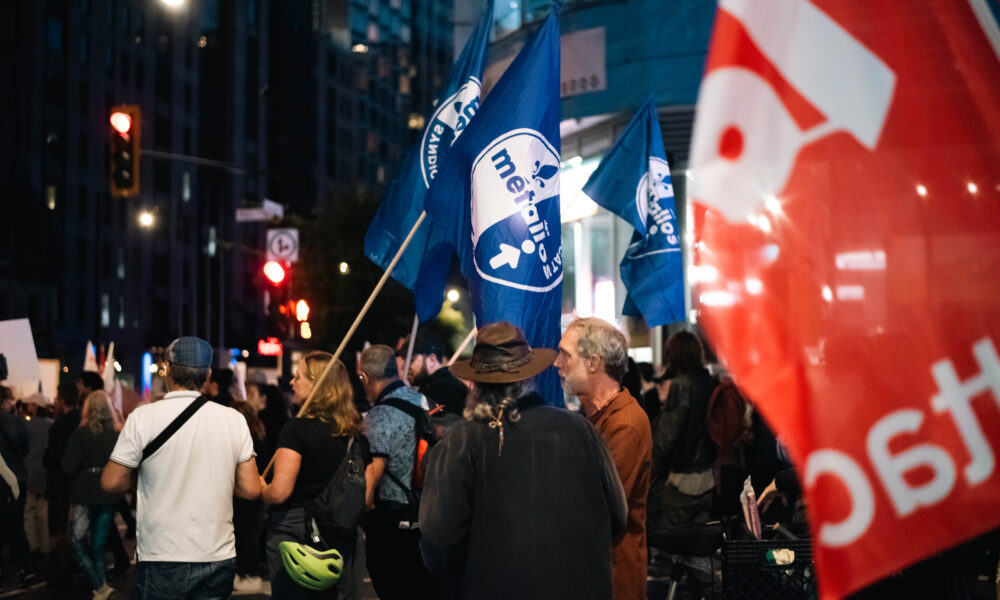Protesting plays a vital role in student life. Standing up for your rights, advocating for those of others, and raising awareness for causes that you hold dear are powerful ways to make your voice heard. Currently, we are witnessing one of the biggest waves of student activism since the Vietnam War. Recent movements on campus such as the Palestinian Solidarity Encampment from Apr. 27 to July 10, or the trans-rights protest march on Sept. 20, highlight the rise in student-led protests. Racialized people, queer and trans people, and other minority groups are particularly at risk, especially when it comes to injuries, violent interactions with police, and getting arrested. In response, The Tribune is committed to providing you with the best information and tools to minimize risk while protesting.
Wearing comfortable shoes that you can walk and run with is a must. Protesting often requires standing and walking for long periods of time so it is best to be appropriately dressed for movement. Aim for simple and comfortable articles of clothing that covers skin as much as possible—this includes hoodies or long-sleeved shirts as well as pants rather than shorts. This comes in handy in case you fall or get hurt. Bringing extra clothes is important as well, so that you have something to change into if you are exposed to dangerous substances, or are splashed with a substance like paint or water.
To avoid being recognized for privacy reasons, cover identifiable tattoos or visible marks. If you have dyed hair, you may want to conceal it, and if you have long hair, tying it up can prevent it from getting caught or causing unnecessary discomfort. Wearing facemasks, scarves, or bandanas to cover your face is the best way to protect your identity.
Always carry water as protesting outside, especially on a sunny day, can be dehydrating. Additionally, if you get hurt during a protest, applying water to your wound will help you avoid infections. Bringing a snack can also be a good idea to avoid fatigue. To carry those items, a backpack is often more convenient than an over-the-shoulder bag for comfort. It’s also a good idea to bring some cash, in case you unexpectedly need it for transportation.
Make sure to protect your eyes for safety reasons with shatter-resistant eye protection like glasses—they can also help you protect your identity for safety. If possible, avoid wearing contact lenses and makeup, as those can trap irritating chemicals.
If you require any medication, such as an inhaler or EpiPen, make sure to carry it with you in case of an emergency or arrest. Also, you might want to wear a medical alert bracelet with information about any medical conditions or allergies you might have.
Know your rights and protest in group
Last but not least, when attending protests, it is important to always know your rights. The Canadian Charter of Rights and Freedoms grants you the right to participate in peaceful protests, protest on public streets, camp in public parks, and wear masks. However, your right to protest differs if you are on private property and does not protect riots or the right to blockade lawful activities. Knowing your rights under the law is crucial, especially if you wind up engaging with a police officer.
The Tribune also recommends that you avoid protesting alone. Knowing other individuals at the protest is the best way to stay safe, ensuring you have support if any issues arise. It is also a good idea to have a pre-planned location to meet up with others in case anything happens, and to make sure your phone is charged for communication purposes. After the protest, debriefing with your group and talking about what you experienced can be a valuable way to process the event together.







